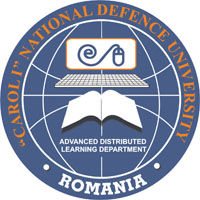ENHANCING INFORMATION PROCESSING BY USER CATEGORIZATION.TAGGING CONTENT IN SUPPORT OF LEARNING.
ENHANCING INFORMATION PROCESSING BY USER CATEGORIZATION.TAGGING CONTENT IN SUPPORT OF LEARNING.
Author(s): Ionut-Dorin StanciuSubject(s): Education
Published by: Carol I National Defence University Publishing House
Keywords: tagging; non-hierarchical categorization; information processing; digital content
Summary/Abstract: Allocating labels to an object, either physical or abstract, contributes to expanding or consolidating the meaning of that particular object, hence, the name "metadata" used in informatics. The structure of learning materials usually attempts to simply the categorization of their contents by creating a hierarchical structure that is reflected in chapters and sections. However, this categorization approach is both subject to the author’s perspective and limited in terms of reflecting the relations between the concepts included in the learning contents. The Web 2.0 era brought the advent of a non-hierarchical contents labelling behaviour, mostly referred to as tagging, and whose main original purpose was the description of contents closest to their author’ original understanding, but also open to interaction with other users. This co-authoring would lead, in turn, to better indexing and search capability of the tagged contents. The main premise of our study was that increasing levels of learners’ involvement in tagging learning contents delivered during academic instruction would lead to deepening of information processing. Two studies were conducted to identify supporting arguments with participants comprised of 1st year undergraduate students enrolled in the Psychology of Education course. The first study respected a between-subjects factorial post-test only design with two experimental groups and one control group. ANOVA on the three groups’ results in a knowledge test illustrated statistically significant differences between the groups, corresponding to the original hypothesis and suggesting that the higher the involvement of the individual in tagging the learning content, the deeper is the learner’s understanding of that content. The second study was a within-subjects repeated measures design in which the same learners were subject to a control and two modalities of tagging, corresponding to various degrees of leaner’s involvement. The results also show statistically significant differences in the measured academic performance, corresponding to the initial research hypothesis. Tagging information content is now a regular practice on the web and it is also possible for e-learning digitally delivered contents. Our research suggests that the learners’ involvement in tagging the contents leads to better learning outcomes. However, factors such as the learners’ computer literacy and openness to digital technologies may also influence their involvement in the tagging process. Future studies, incorporating more refined research designs, can optimize the understanding of the specificity and accuracy of the observed influence.
Journal: Conference proceedings of »eLearning and Software for Education« (eLSE)
- Issue Year: 11/2015
- Issue No: 03
- Page Range: 237-246
- Page Count: 10

